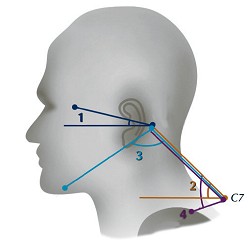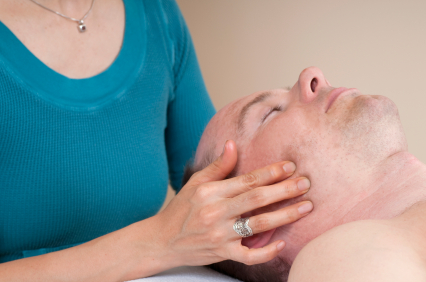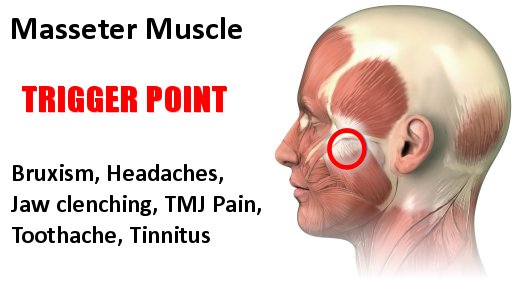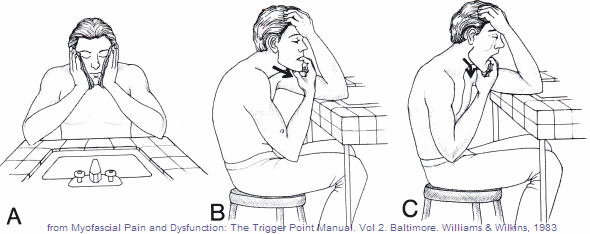TMJ Pain Relief – What To Do?
Because the cause of most forms of temporomandibular disorders causing tmj pain are not well established, in the estimated 10 million Americans estimated to have significant clinical tmj symptoms. Treatment has frustrated most professionals and patients alike. Without specific indications, therapy for tmj pain relief should be conservative and palliative.
Treatments For TMJ Pain Relief
It has been estimated that the annual cost for treating chronic tmj pain is $32 billion and that the high cost of that treatment is directly related to the lack of relief to traditional medical treatment approaches. Consequently, there is a wide range of therapies that are used in treating patients with TMD, including pharmacotherapy, splints, intra-articular injections of lubricants or anti-inflammatory agents, arthrocentesis (puncture and aspiration of the TMJ using an inflow and an outflow needle), physical therapy, and acupuncture. Less commonly used methods include ultrasound, low-level lasers, and transcutaneous electrical nerve stimulation.
Although there are many articles in the literature concerning TMJ Disorders, the effectiveness of the various treatments have been poor, inconsistent, or not well established. Therefore, it is not surprising that none of the numerous methods currently being used have come to be generally accepted as the treatment of choice for TMJ pain relief.
Fortunately, most patients with TMJ disorders improve and obtain relief with or without treatment and conservative therapies should be encouraged before invasive treatments are considered, especially those that are non-reversible.
The Neck & TMJ
As discussed previously, there is a direct connection between the tmj muscles, neck muscles and posture. The neck exercises from the menu at the top, left of the page are highly recommended along with posture recommendations. If you have had a whiplash injury or have neck problems, a chiropractic evaluation may be helpful.

- A 2013 study in the Journal of Oral & Maxillofacial Research of 154 subjects noted a “strong relationship between neck disability and jaw disability”. The authors noted a significant relationship between tmj and neck extensor/flexor muscles. So, methods to reduce neck pain, especially specific neck exercises are important when seeking relief from tmj pain.
- A 2010 study in the Journal of Oral Rehabilitation indicated that the association between the neck and jaw indicates, “treatment needs to focus on both areas because the improvement of one could have an influence on the other.”
This is a reasonable approach and one I highly recommend, even if you are suffering tmj symptoms and are not aware of any neck problems. I feel seeing a chiropractor is a great way to see if this approach to treatment will be helpful. A physical therapist can also help with neck exercises. Nowadays, we are seeing both doing “manipulations”, however, I found specific chiropractic adjustments along with simple cervicocranial exercise/stretching that can be done at home to be the key.
- A study in the 2009 Journal of Oral Rehabilitation showed that treatment and exercise to the neck had a direct effect on decreasing intensity of tmj pain as well as incresing pain free range of mouth opening related to muscular tmj problems
- A 2019 study in the Colombian journal Revista de Salud Publica found that 83% of patients with confirmed joint and/or muscular temporomandibular disorders presented with Forward Head Posture. This comes on the heels of a 2017 study in Acta Odontologica Latinoamericana, which indicates forward head posture to be a risk factor for TMJ problems.
TMJ Pain Relief With Muscle Therapy

Trigger points are known to become aggravated from muscle use, poor sleep, psychological tension and emotional stress, and their severity can fluctuate as the contributing factors change. Treating muscles with stretching, massage or deep pressure therapy to the neck and jaw muscles may provide tmj pain relief.
- A 2012 issue of Advances in Clinical and Experimental Medicine details the effects and different techniques to massage the masseter and temporalis muscles for myofascial pain treatment that can be helpful with tmj pain relief. The authors do a great job of illustrating and explaining this. If your massage therapist is not familiar with these techniques, click on the link, print it out and take it to him/her on your next visit.

- A 2020 study in the journal Pain indicated abnormalities of the temporalis muscles supports the hypothesis that the pathophysiology may be related to peripheral nerve barrage originating from the muscles of mastication.
It is not difficult to treat the masseter and temproalis (muscle above) yourself, you can apply pressure between the jaw bone and the cheek bone. Use a finger or your thumb and press in and slightly up. Sometimes you can feel the pain deeply or it may even radiate to other areas. Press and hold for 30 seconds. You can apply more pressure as you get used to it it or if you are getting results. Another way I like to treat this muscle is to close the jaw, press in at the bottom of the jaw, then open the jaw slowly, while pushing upward until the jaw stops as you reach the top of the muscle at the cheek bone. This can be repeated a few times at first, then more as you get better.
- A 2020 study in the journal Cranio found aromatherapy massage using lavender oil to be effective in muscle related pain with limited mouth opening.
- A 2010 study in the Journal of Manipulative and Physiological Therapeutics found that stretching of the hamstring muscles (back of thigh), either one side or both, has an immediate relief effect over the masseter jaw muscle and the upper trapezius muscle in healthy subjects. In addition, an increase in maximum active mouth opening was also found after the stretching of the hamstring musculature.
Medicines For TMJ Pain
Medicines, like other pain disorders involving the musculoskeletal system, can provide relief. Acetaminophen and non-steroid antiinflammatory medicines can benefit both acute as well as chronic tmj pain, including flare-ups. For muscular spasms and persistent teeth grinding (bruxism), typical muscle relaxers or drugs in the benzodiazepine family like Valium can help when more conservative attempts at relaxing methods fail. Antidepressants can sometimes help alleviate tmj pain. Antidepressants often utilized for chronic pain syndromes can help treat chronic TMJ problems. Care needs to be used whenever prescribing drugs that effect serotonin because they can have a side effect of producing bruxism. Medicine should be used to help with tmj pain relief, not the sole method of treatment.
- A 2018 systematic review of the literature in the Journal of Oral Rehabilitation shows a high incidence of psychosocial impairments associated with temporomandibular disorders. They found moderate to severe levels of depression and somatisation.
Somatisation is somewhat obscure, however, it is a tendency to experience psychological distress in somatic or bodily symptoms with seeking health care providers for these symptoms. It is usually a response to anxiety and depression. It is commonly encountered in primary health care and can be frustrating to both the patient and doctor. Studies have shown that about 20% or 2 out of 10 patients display this, so it is fairly prevalent in chronic pain conditions.
It is unclear which comes first, like the proverbial chicken and the egg; however, the depression and anxiety should be considered as a part of the problem and assessed and treated with medication, a therapist, or just meditation depending on the severity.
- A 2018 study in the Journal of International Medical Research found that tmj patients had increased parathyroid hormone levels due to vitamin D deficiency. The authors of the study recommend vitamin D deficiency be assessed and corrected.
- A 2020 International Journal of Oral and Maxillofacial Surgery study indicated omega-3 supplementation could be a treatment similar to glucocorticoids for those with tmj arthritis.
Injections For TMJ Pain Relief
TMJ joint injections with corticosteroids or anesthetics can help with inflammation of the joint capsule. These injections are only for acute problems that are severe in nature or when more conservative treatments fail to provide pain relief. Repeated corticosteroid injections should not be advised as this can weaken the area. Injections using anesthetics or Botox (botulinum toxin) have been utilized for trigger points in the muscles in cases of persistent bruxism.
- A 2015 study in the Journal of Oral and Maxillofacial Surgery used joint injections of hyaluronic acid to evaluate arthritis changes in the tmj of tindividuals with problems with the disc in this joint. The authors noted joint repair and jaw function at 3 months after the injection, which lasted 9 months at the last evaluation. So, for those with significant joint related problems like arthritis, injections may be beneficial.
- A 2019 study in the Journal of Stomatology, Oral and Maxillofacial Surgery found quality of life improvement and pain control with botulinum toxin injections in the masticatory muscles of 28 patients.
- A 2020 study in the journal of Korean Association of Oral and Maxillofacial Surgeons of 44 patients concluded, “Botulinum toxin is an effective treatment for patients with temporomandibular myofascial pain and sleep bruxism.”
- A 2020 study of 100 patients found that those with arthritis causing pain and limited mouth opening, 4 injections of triamcinolone acetonide (a synthetic corticosteroid) and hyaluronic acid helped in relieving pain and clicking sounds in the majority of patients. The treatment is spaced a week apart for 4 weeks with almost no side effects and is cost effective.
Appliances/Splints
There is much debate about the use of splints, but there are many types of splints as well as many designs and ones used by professionals only or over the counter devices. While my experience was negative regarding the use of these devices, it has been many years and improvements in both diagnosis and treatment, including splints has been noted.
- According to a 2014 study in the Journal of Indian Prosthodontic Society, 80 patients were split equally into groups where 40 were given a stabilization splint along with jaw muscle exercises and counselling, while the other 40 were given only the jaw muscle exercises and counselling. Findings after treatment and at 6 months indicated no difference in face pain relief as well as jaw mobility increases.
- A 2012 study in the Journal of Oral Rehabilitation examined 80 patients for TMJ treatment, 39 using a stabilizing splint, exercises and counselling, 41 received exercises and counsiling only. and instructions for masticatory muscle exercises. After 1 month, both groups showed improvement, however, the difference between the groups was not significant for pain relief and examination findings.
- The same group was examined after 1 year in a follow up study published in the same journal, and there continued to be no significant differences between those treated using a splint or without one.
- However, a 2012 study in the journal Human Brain Mapping provides insight into the possible therapeutic effects of occlusal splints through effects on the brain. Other studies have indicated better jaw motion after using splints.
- A 2014 study in BioMed Research International used an occlusal splint to treat 60 patients with tmj pain in association with neck pain. The group was split into splint treatment versus self instructions. After 3 months, the splint group showed significant improvement not only in tmj pain relief, but neck pain relief and increased mobility as well. This further indicates a significant relationship between neck pain and jaw pain significant association between TMD treatment and reduction of cervical spine pain, as far as improvement of cervical spine mobility.
- A 2020 study in Pain Research & Management found the use of a small unit for local vibration therapy was effective in the control of TMJ related pain, local muscular pain, and headache. The unit used in the study was a Novafon Pro
- A 2020 study in Scientific Reports found a stabilization splint helped depressive symptoms and pain related disability. There are three groups of splints based on function including repositioning, distraction or pivot, and stabilization splints. These commonly called mouth guards have been used frequently for TMJ pain relief. Therefore, the functions of improving teeth alignment or easing muscular tension and avoiding clenching of the teeth through their use may be an effective strategy for some.
- A 2022 study in the Journal of Prosthetic Dentistry found these devices, hard or resilient, can help reduce muscle hyperactivity that leads to neuromuscular fatigue of the masseter and anterior temporalis muscles.
- A 2022 study in The International Journal of Prosthodontics showed that splints (2 or 4mm thickness) were effective in treating jaw muscle disorders as well as disc displacements, particularly with muscle related pain and TMJ sound symptoms.
Note: Permanent adjustments can be done by filing or grinding down the teeth. Studies to review these types of adjustments for providing TMJ pain relief have basically concluded there was no reasonable evidence showing benefit or harm. I would beg to differ regarding harm as some of these treatments can be very costly, time consuming and unpleasant regarding adjusting bite through filing teeth – a permanent procedure, requiring complete reversal if it worsens symptoms.
TMJ Disc Displacement
Forward joint disc displacement can cause the jaw to actually lock in an open position. Although rare, this causes inflammation and pain of the capsule surrounding the joint and can interfere with eating and swallowing. Many will have a history of this locking with a noticeable clicking while chewing, or a persistent habit of clenching their teeth. If locking occurs, it needs to be unlocked immediately and this can often be done by moving the jaw sideways and opening the mouth wide. If this is not successful, a professional can place a thumb in the mouth, holding underneath the chin, then push down on the back teeth while pulling up on the chin. The head needs to be stable using the other hand, against a head rest or even a wall. Using an injection or muscle relaxer can help reduce spasm and pain prior to performing this. If this does not work, an oral surgeon should be consulted right away.
Tips For TMJ Pain Relief
Here are some simple things to keep in mind for tmj pain relief:
- Apply cold or moist heat to the areas which are painful; sometimes heat will feel better, sometimes cold will feel better. Both have the ability to alleviate the pain, reduce swelling and relax muscles. Use a moist type of heat for about twenty minutes to the area of as needed during the day. You may use a moist towel and heat it in a microwave oven until it is comfortably warm, and even use it around a hot-water bottle and this will help to maintain the heat. For cold, you can wrap ice in a towel and use for 10-15 minutes as needed (use it on the painful location just it starts to feel numb).
- Eat softer foods. Avoid hard or chewy foods. You can slice fruit and cook vegetables using steam, then cut into small pieces. Chew using the back teeth instead of biting with the front. A 2019 study from the Medical Faculty of the University Palacký shows that temporomandibular disorders significantly impact the maximal bite force and function of the masticatory muscles.
- Avoid chewing gum – A 2014 study in the Journal Craniofacial Surgery indicated that individuals with gum chewing habits had an increased prevalence of TMJ problems, including clicking and pain.
- Try chewing with both sides at the same time instead of one side or alternate sides to reduce strain on one side.
- Keep your tongue up, teeth apart, and jaw relaxed. Place your tongue softly on the palate in back of the upper front teeth. This allows the teeth slightly separate and will help relax the muscles of the jaw. The upper and lower teeth should not touch at rest, except occasionally with swallowing. Monitor the position of your jaw during the day to keep it in a relaxed, comfortable position.
- Reduce caffeine. Caffeine may increase jaw tension and may contribute to jaw pain and headaches from overuse or withdrawal. Caffeine is often used in soda, tea, coffee as well as chocolates.
- Try to prevent straining muscles of the jaw and the joint. These include clenching or grinding of the teeth, biting the inside of the cheeks, pressing your tongue hard against the teeth, and biting objects like fingernails or pens. Replace these habits with proper tongue position on the palate.
- Try not to rest your jaw in your hand to reduce strain on the TMJ and maintain jaw muscles in a rest position.
- Avoid things that involve excessive or prolonged wide opening of the mouth including long dental procedures without frequent breaks or yawning widely until the pain is reduced.
- Do not sleep on your stomach, which places damaging torsion forces on the jaw and neck.
- Use anti-inflammatory medications like ibuprofen or aspirin (without caffeine) to reduce TMJ pain and muscle soreness.
A 2021 study in the Journal of the Mechanical Behavior of Biomedical Materials indicates that chewing uses the highest muscle activations of the jaw region, potentially leading to high temporomandibular joint loading, which is associated with disorders. The joint disc stress was higher during the closing phase of the chewing cycle and for the non-working side disc. Smaller and softer foods lead to less TMJ loading. By investigating dynamic chewing, the results strengthen the confidence in self-management recommendations, potentially reducing pain levels of patients.
A 2021 study in The Journal of Oral & Facial Pain and Headache found a gluten free diet reduces pain in women with myofascial pain in the masticatory muscles. While more studies need to be done, this is an interesting finding and may be beneficial as an adjunctive therapy.
Exercises
As soon as the pain is much better, you actually may perform a few exercises to help to make the muscles stronger in an attempt to prevent tmj pain from returning. These types of exercises shouldn’t be painful. In the event that it is painful to perform the exercises, quit performing these and seek advice from your health care provider.
- Resisted mouth opening: Put your thumb or even 2 fingers beneath your chin then open up your jaws slowly and gradually, pressing upward gently on the chin using your thumb. Maintain for 3 to 6 seconds. Close your mouth slowly and gradually.
- Resisted mouth closing: Put your thumbs beneath the chin as well as your 2 index fingers over the ridge in between your mouth and also the bottom part of the chin. Press downward gently on your chin while you close the mouth.
- Tongue upward: Slowly and gradually open and shut your mouth while trying to keep your tongue in contact with the top of the mouth.
- Side to side jaw motion: Put an object approximately 1/4 inch thick (for instance, 2 tongue depressors) in between the front teeth. Slowly and gradually shift your jaw sideways. Raise the thickness of the object when the exercise gets easier.
- Forward jaw motion: Put an object approximately 1/4 inch thick in between your front teeth then shift your bottom jaw forwards so your bottom teeth move in front of the top teeth. Raise the thickness regarding the object when the exercise gets easier.
Stretching

The seated self-stretch exercise for the masseter muscle is performed at the sink in three steps. A. Hot packs are applied to the face. B. Two fingers are inserted behind the lower incisor teeth, while the thumb grasps the chin to pull the lower jaw forward. C. Full stretch is achieved by pulling the jaw downward while continuing to pull it forward.
A 2020 study in the Journal of Oral & Facial Pain and Headache found jaw exercises are effective in reducing the intensity of pain, associated headaches, and analgesic medications in patients with masticatory myofascial pain. Additionally cost effective when compared to treatment with a stabilization appliance.
Can These Self Help Management Strategies & Counselling Help TMJ Pain?
- It really depends on the cause and severity of symptoms, however, a 2013 investigation in the Journal of Oral Rehabilitation indicates, that self management therapies and informative guidance may be a low cost conservative and beneficial alternative treatment that has the potential for improving psychological related factors and to remove harmful behavior to control symptoms and signs of tmj pain.
Experience
Personal experience: When I was young, I had a bike accident where I was thrown from the bike and landed on my chin. A white t-shirt turned red with blood, eight stitches and some years later, in my teens, I began to experience tmj pain. It became quite bothersome and I consulted a dentist. The dentist examined me and determined I needed my bite reconstructed. Well, hours of drilling to reshape my bite over a period of weeks and under medication, the result was no relief! In frustration, I gave up and even threw away my bite plate. Bite reconstruction from poor occlusion may have been the standard many years ago. Personal experience indicated this technique was useless and counterproductive.
- In fact, a 2017 systematic review in the Journal of Oral Rehabilitation indicates that dental occlusions are not the cause, but actually may be the result tmj problems.
Some years later, I visited a chiropractor and after my first adjustment, I noticed something was happening with my tmj. Within the first week of adjustments, I noticed a definite relief of my tmj problem. The chiropractor said I would probably need to have my bite re-reconstructed after my neck was finished it’s adjustments. No, I didn’t go back to the dentist and yes, I still suffer from tmj problems, however, the chiropractic adjustments made it much easier to deal with and provided much needed relief from my tmj pain.
The American Association of Dental Research, they state, It is strongly recommended that, unless there are specific and justifiable indications to the contrary, treatment of TMJ patients initially should be based on the use of conservative, reversible and evidence-based therapeutic modalities. Studies of the natural history of many TMJ problems suggest that they tend to improve or resolve over time.
While no specific therapies have been proven to be uniformly effective, many of the conservative modalities have proven to be at least as effective in providing symptomatic relief as most forms of invasive treatment. Because those modalities do not produce irreversible changes, they present much less risk of producing harm. Professional treatment should be augmented with a home care program, in which patients are taught about their disorder and how to manage their symptoms for tmj pain relief.
New technology provides promising methods for providing tmj pain relief. I would suggest that after reasonable attempts at conservative treatments including home management, a Dental specialist that is trained in advanced management of disorders of the temporomandibular joint should be consulted.
Injections are a more invasive way to treat difficult cases. Corticosteroid injections into the affected jaw joint can help reduce inflammation and pain. Botulinum toxin A is also used as well as other agents.
- A 2023 study in the National Journal of Maxillofacial Surgery found injectable platelet-rich fibrin (i-PRF) has various advantages over platelet-rich plasma (PRP). It improves healing, matrix remodeling, and stimulates angiogenesis and cell proliferation.



